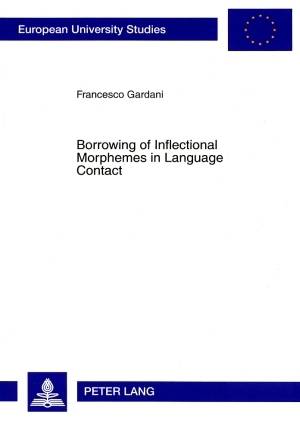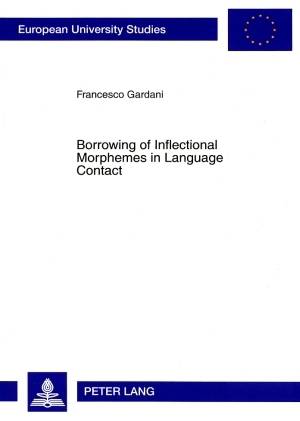
- Afhalen na 1 uur in een winkel met voorraad
- Gratis thuislevering in België vanaf € 30
- Ruim aanbod met 7 miljoen producten
- Afhalen na 1 uur in een winkel met voorraad
- Gratis thuislevering in België vanaf € 30
- Ruim aanbod met 7 miljoen producten
Zoeken
Borrowing of Inflectional Morphemes in Language Contact
Francesco Gardani
Paperback | Engels | Europäische Hochschulschriften / European University Studies / Publications Universitaires Européenn | nr. 320
€ 89,95
+ 179 punten
Omschrijving
This book is about the borrowing of inflectional morphemes in language contact settings. This phenomenon has at all times seemed to be the most poorly documented aspect of linguistic borrowing. Contact-induced morphological change is not rare in word formation, but exceptional in inflection. This study presents a deductive catalogue of factors conditioning the probability of transfer of inflectional morphology from one language to another and adduces empirical data drawn from Australian languages, Anatolian Greek, the Balkans, Maltese, Welsh, and Arabic. By reference to the most advanced theories of morphology, a thorough analysis of the case studies is provided as well as a definition of inflectional borrowing according to which inflectional borrowing must be distinguished from mere quotation of foreign forms and is acknowledged only when inflectional morphemes are attached to native words of the receiving language.
Specificaties
Betrokkenen
- Auteur(s):
- Uitgeverij:
Inhoud
- Aantal bladzijden:
- 112
- Taal:
- Engels
- Reeks:
- Reeksnummer:
- nr. 320
Eigenschappen
- Productcode (EAN):
- 9783631565193
- Verschijningsdatum:
- 28/02/2008
- Uitvoering:
- Paperback
- Formaat:
- Trade paperback (VS)
- Afmetingen:
- 148 mm x 210 mm
- Gewicht:
- 154 g

Alleen bij Standaard Boekhandel
+ 179 punten op je klantenkaart van Standaard Boekhandel
Beoordelingen
We publiceren alleen reviews die voldoen aan de voorwaarden voor reviews. Bekijk onze voorwaarden voor reviews.











